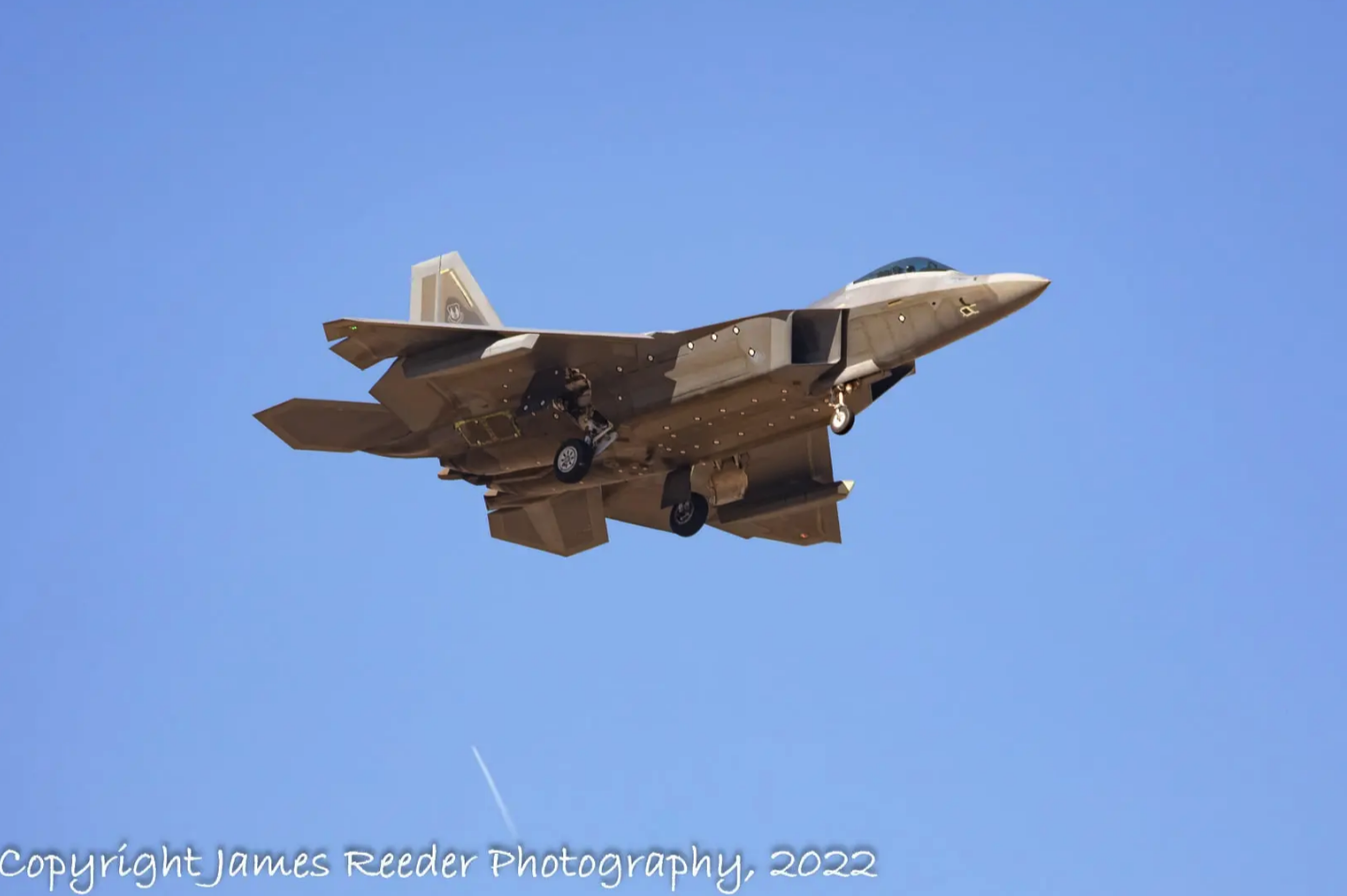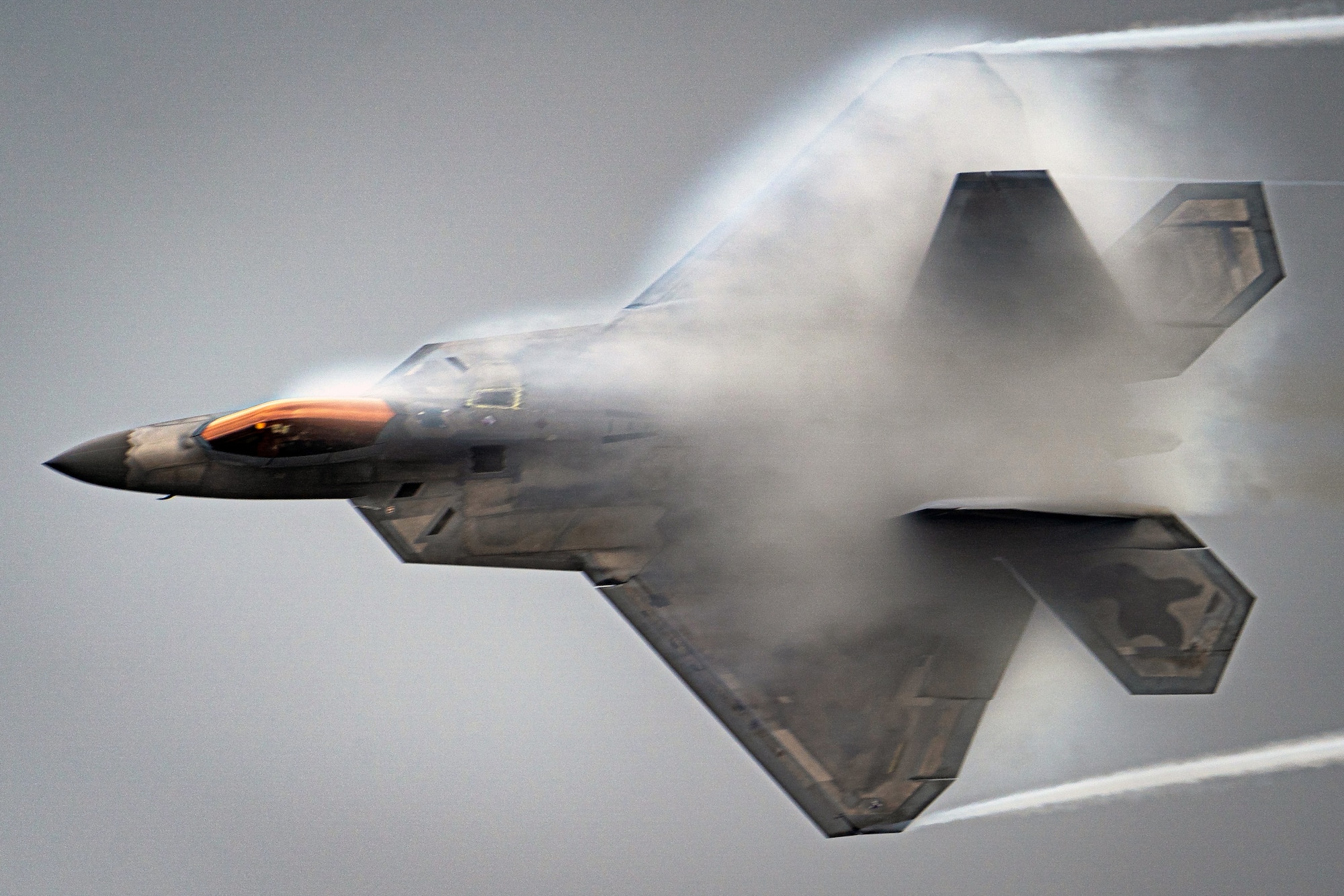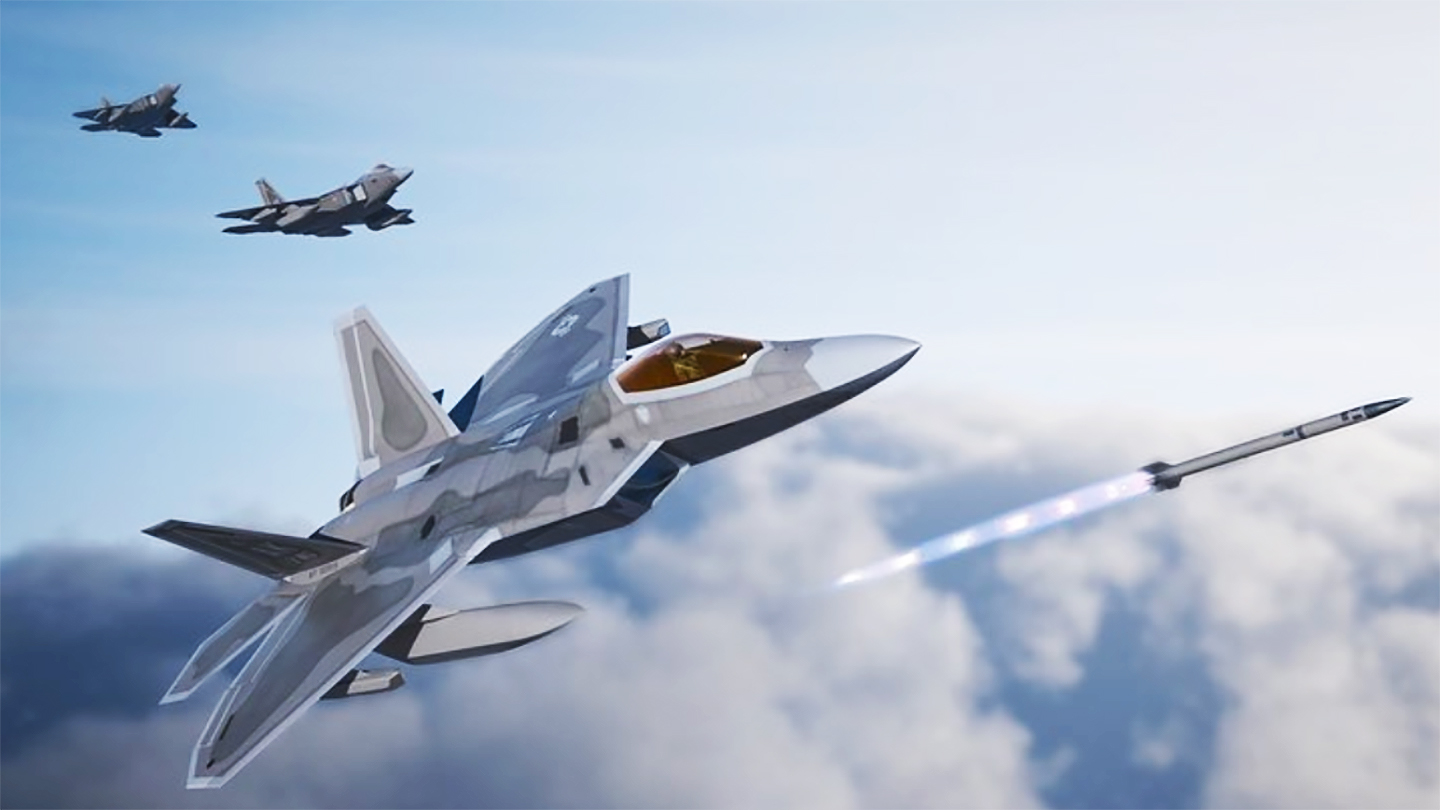The head of the U.S. Air Force’s Air Combat Command, Gen. Mark Kelly, has posted a very interesting piece of art on his Instagram page. It shows a trio of F-22s outfitted with unique-looking fuel tanks and faceted pods under their wings. One is also firing off a missile we have never seen before.
The post reads:
15 years ago today, following a 12-minute performance by Maj. Paul “Max” Moga here at Langley, ACC gave the F-22A Raptor demonstration the official seal of approval for future air shows. At that time, the F-22 was the world’s only fifth-generation fighter aircraft – more advanced and more capable than anything else in the world in terms of maneuverability, stealth, supercruise, integrated avionics, and improved supportability.
There is absolutely no exposition in General Kelly’s post about the unique features we are seeing in the image, but, due to our past exclusive reporting, we can identify two out of the three features in the concept art.
The first is the pair of faceted underwing pods attached to the F-22’s outer underwing hardpoints. These pods are in flight testing now, as we had reported on earlier. While it isn’t perfectly clear what their exact purpose is, our analysis points to them being a long-promised infrared search and track system and possibly an electronic warfare pod. The same faceted aperture that was seen on one of the real-life pods is depicted in the newly released Raptor concept art, as well.

Then there are the very unique-looking fuel tanks. Up until the budget line-item books were released late last week, those would have been a puzzling addition. However, as we reported just days ago, the F-22 is slated to get new fuel tanks and pylons that are more efficient and stealthier than their 600-gallon predecessors.
This new tank arrangement is called the Low Drag Tank and Pylon (LDTP). The budget entry about it reads:
The F-22 Low Drag Tank and Pylon (LDTP) capability is critical to maintaining Air Superiority in the joint fight and combating emerging threats. Due to the advancement of adversary technologies in detection and emergence of fighter, cargo, and refueling platforms increasing engagement ranges, it is critical to future mission execution and success to provide the Raptor with an increased range capability while maintaining own-ship survivability.
The F-22 LDTPs are advanced technological designs providing increased persistence and range while maintaining lethality and survivability. The low drag tanks are intended to reduce drag, facilitate supersonic flight with external tanks and extend the range of the F-22.
The pylons are equipped with smart rack pneumatic technology to accurately control ejection performance and smooth wind swept surface for minimum drag without store. LDTP risk reduction activities are captured under the Advanced Technology Development (ATD) major thrust. Documentation of the development and integration components as part of the Engineering, Manufacturing, and Development (EMD) program will be captured under the LDTP major thrust.
As we noted in our recent piece about the F-22’s looming upgrades and the type’s new close relationship to the Next Generation Air Dominance (NGAD) program, the addition of these new tanks and pylons makes perfect sense:
This low-drag tanks and pylons initiative is quite interesting as it is also part of the ATD, which also is connected to the NGAD technologies test and integration arrangement. The F-22 has flown operationally with 600-gallon fuel tanks for years, as well as pylons that can be jettisoned with them. Part of the F-22 program developed this system. While losing the tanks and pylons in flight would still leave the F-22 with a degraded radar cross-section — the connection points and plumbing would still be partially exposed — it would make the jet much harder to spot on radar compared to having the tanks or even just the pylons still be attached. This new initiative looks to integrate a more efficient tank design and a pylon that leads to very little, if any, radar cross-section disruption compared to a ‘clean’ F-22 once the tanks and pylons are jettisoned.
The F-22’s range has always been its biggest weakness and external tanks would be a critical component for executing combat operations over great distances of the Pacific against a major opponent — China. Getting the F-22 more aerodynamically efficient tanks with pylons that can be jettisoned without significantly disrupting the jet’s radar-evading capabilities would be a major advantage and would help keep the F-22 relevant. This technology would also likely be spiraled into NGAD platforms, namely the manned aircraft, that is being designed to fight more independently of refueling assets over much larger distances.

Finally, we have a missile to look at unlike any in the inventory. We have no idea if this represents the AIM-260, the shadowy long-range air-to-air missile that will fit in the same general space that an AIM-120 AMRAAM can fit into, which is slated to enter service next year. If so, this would be our first look at the missile’s configuration. There are a number of other missile programs ongoing that could account for it as well, including smaller hit-to-kill types, and even a modular medium-range missile concept that is now being explored by the Air Force, among others.
So, there you have it, our first look at what the Raptor will likely look like, at least on some missions, in the back half of its service life. One thing that’s missing is mirror-like skin, of course, but now that we know the Raptor is actively testing NGAD technologies and may even receive some from the program itself, we are very likely to get additional glimpses of oddities hitting the F-22 fleet in the months and years to come.
Contact the author: Tyler@thedrive.com
